
How to Use AP2212K-3.3: Examples, Pinouts, and Specs
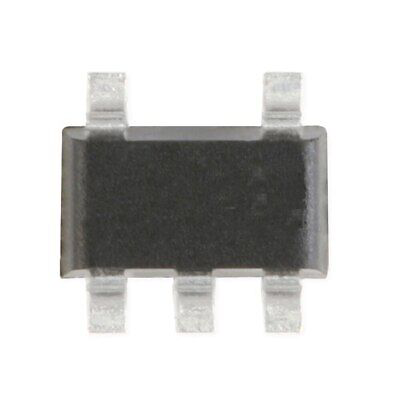
 Design with AP2212K-3.3 in Cirkit Designer
Design with AP2212K-3.3 in Cirkit DesignerIntroduction
The AP2212K-3.3, manufactured by Reland Sun (Part ID: 739227851330), is a low-dropout (LDO) voltage regulator designed to provide a stable output voltage of 3.3V. This component is ideal for low-power applications, offering high accuracy, low noise, and fast transient response. Its compact design and reliable performance make it suitable for powering sensitive electronic devices such as microcontrollers, sensors, and communication modules.
Explore Projects Built with AP2212K-3.3
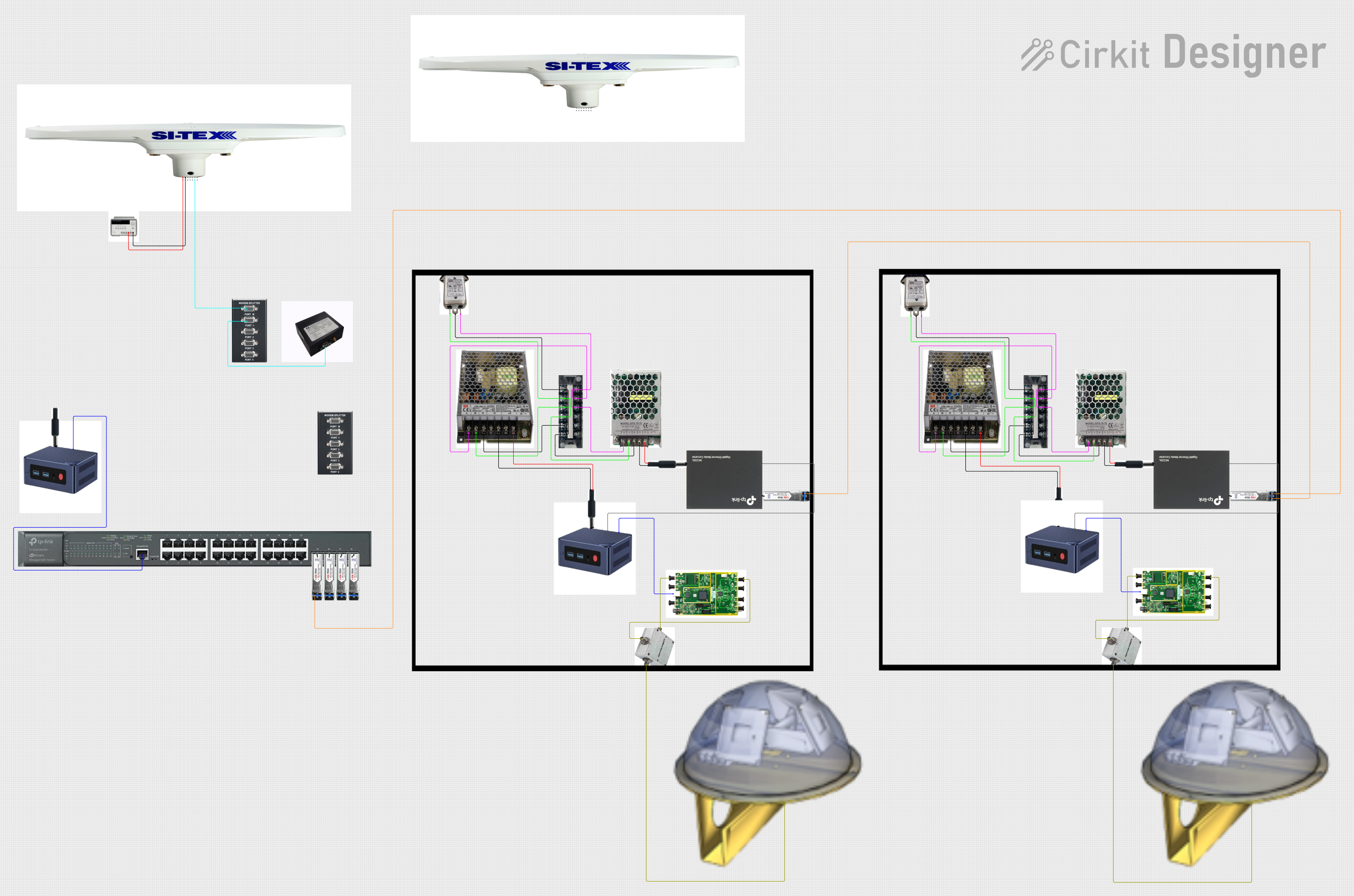
 Open Project in Cirkit Designer
Open Project in Cirkit Designer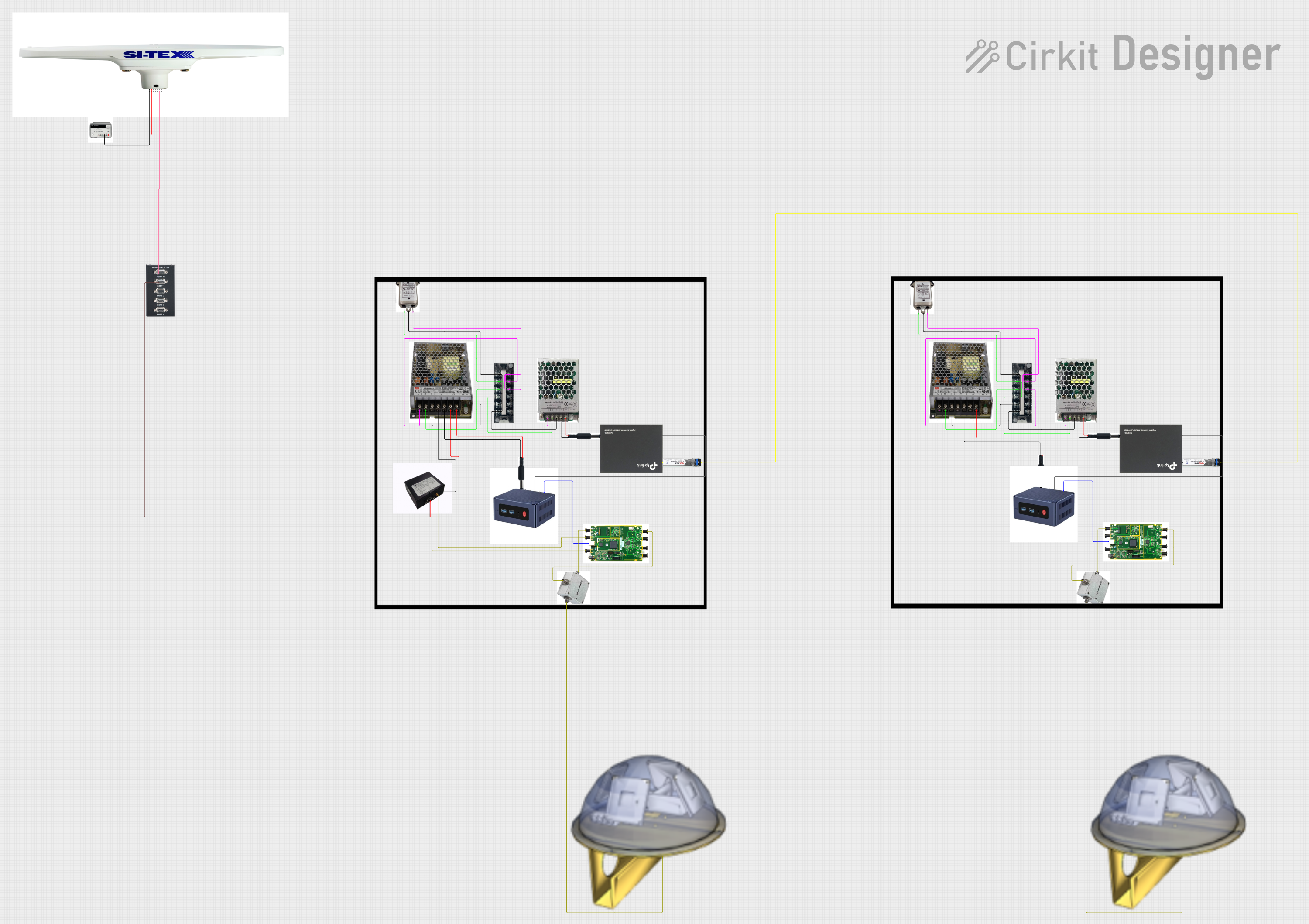
 Open Project in Cirkit Designer
Open Project in Cirkit Designer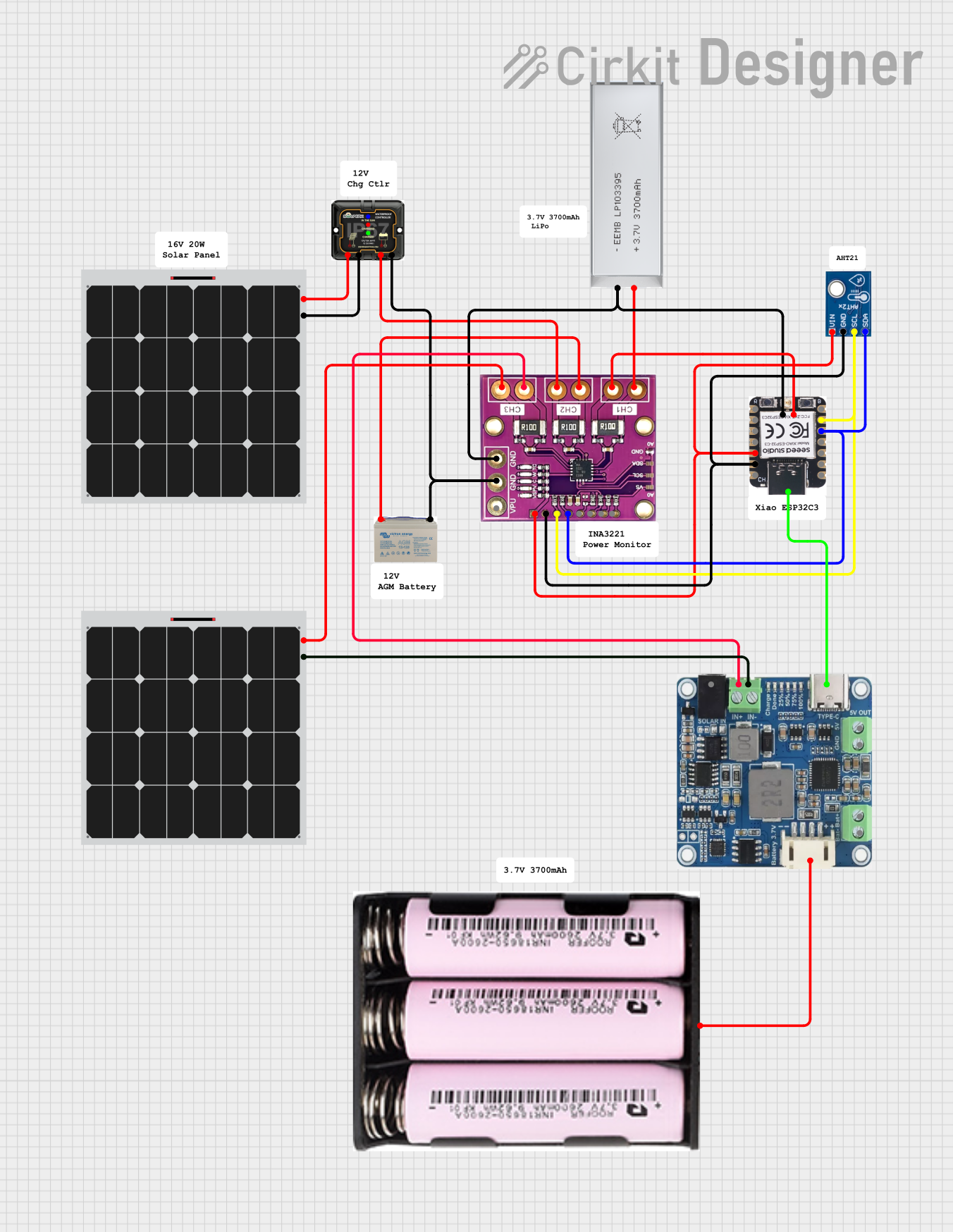
 Open Project in Cirkit Designer
Open Project in Cirkit Designer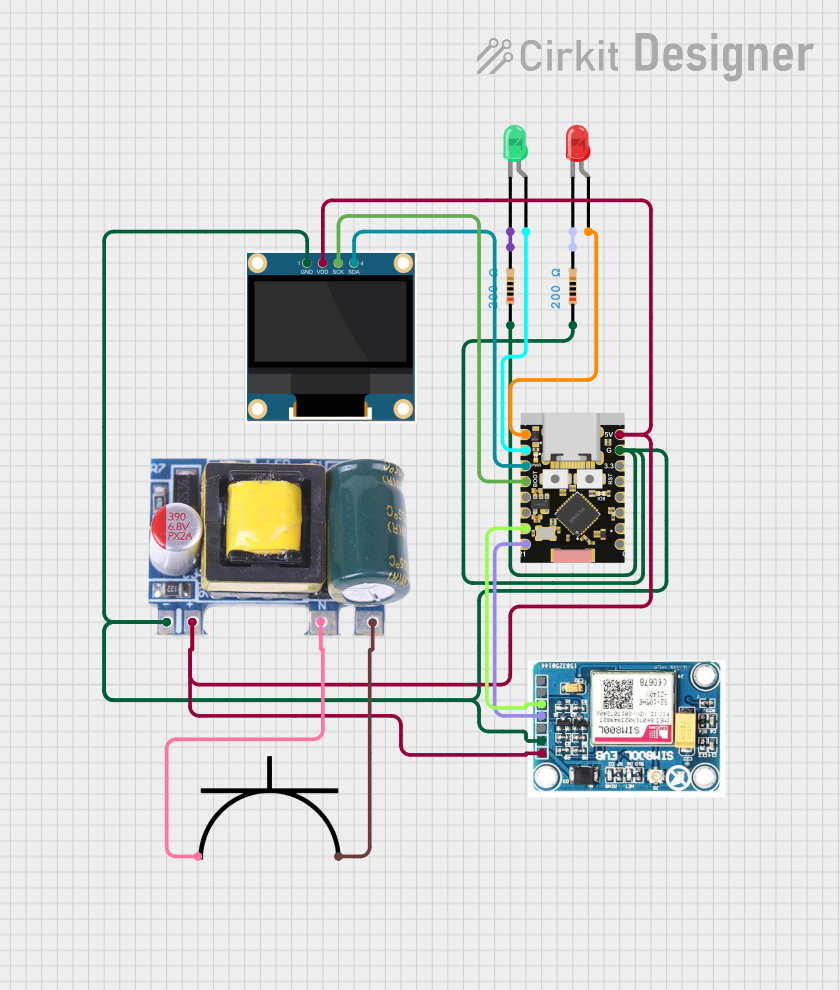
 Open Project in Cirkit Designer
Open Project in Cirkit DesignerExplore Projects Built with AP2212K-3.3

 Open Project in Cirkit Designer
Open Project in Cirkit Designer
 Open Project in Cirkit Designer
Open Project in Cirkit Designer
 Open Project in Cirkit Designer
Open Project in Cirkit Designer
 Open Project in Cirkit Designer
Open Project in Cirkit DesignerCommon Applications and Use Cases
- Powering microcontrollers (e.g., Arduino, ESP32, etc.)
- Voltage regulation for sensors and analog circuits
- Battery-powered devices
- Portable electronics
- Noise-sensitive applications such as audio and RF systems
Technical Specifications
Key Technical Details
| Parameter | Value |
|---|---|
| Input Voltage Range | 2.5V to 13.2V |
| Output Voltage | 3.3V |
| Output Current | Up to 300mA |
| Dropout Voltage | 250mV (at 300mA load) |
| Quiescent Current | 55µA (typical) |
| Output Voltage Accuracy | ±1% |
| Operating Temperature | -40°C to +85°C |
| Package Type | SOT-23-5 |
Pin Configuration and Descriptions
The AP2212K-3.3 is available in a 5-pin SOT-23 package. The pinout is as follows:
| Pin Number | Pin Name | Description |
|---|---|---|
| 1 | GND | Ground pin |
| 2 | VIN | Input voltage pin (2.5V to 13.2V) |
| 3 | VOUT | Regulated 3.3V output voltage |
| 4 | NC | No connection (leave unconnected or grounded) |
| 5 | EN | Enable pin (active high, logic high to enable) |
Usage Instructions
How to Use the AP2212K-3.3 in a Circuit
- Input Capacitor: Connect a 1µF ceramic capacitor close to the VIN pin to stabilize the input voltage and reduce noise.
- Output Capacitor: Connect a 1µF ceramic capacitor close to the VOUT pin to ensure stable operation and minimize output voltage ripple.
- Enable Pin: Tie the EN pin to VIN or a logic high signal to enable the regulator. If unused, connect it to VIN.
- Grounding: Ensure a low-impedance connection to the GND pin for proper operation.
- Load Connection: Connect the load to the VOUT pin, ensuring the total current does not exceed 300mA.
Important Considerations and Best Practices
- Thermal Management: Ensure adequate heat dissipation, especially when operating at high input voltages or near the maximum output current.
- Input Voltage: Avoid exceeding the maximum input voltage of 13.2V to prevent damage to the regulator.
- Capacitor Selection: Use low-ESR ceramic capacitors for optimal performance.
- Enable Pin Usage: If the enable function is not required, connect the EN pin directly to VIN to keep the regulator always on.
Example: Using the AP2212K-3.3 with an Arduino UNO
The AP2212K-3.3 can be used to power an Arduino UNO from a higher voltage source. Below is an example circuit and Arduino code:
Circuit Setup
- Connect a 9V battery to the VIN pin of the AP2212K-3.3.
- Connect the GND pin of the AP2212K-3.3 to the ground of the battery and the Arduino UNO.
- Connect the VOUT pin of the AP2212K-3.3 to the 5V pin of the Arduino UNO (the Arduino's onboard regulator will step it down to 3.3V for internal use).
Arduino Code Example
// Example code to blink an LED using an Arduino UNO powered by the AP2212K-3.3
// Ensure the AP2212K-3.3 is providing a stable 3.3V output to the Arduino.
const int ledPin = 13; // Pin connected to the onboard LED
void setup() {
pinMode(ledPin, OUTPUT); // Set the LED pin as an output
}
void loop() {
digitalWrite(ledPin, HIGH); // Turn the LED on
delay(1000); // Wait for 1 second
digitalWrite(ledPin, LOW); // Turn the LED off
delay(1000); // Wait for 1 second
}
Troubleshooting and FAQs
Common Issues and Solutions
No Output Voltage:
- Ensure the EN pin is connected to VIN or a logic high signal.
- Verify that the input voltage is within the specified range (2.5V to 13.2V).
- Check the input and output capacitors for proper connection and value.
Excessive Heat:
- Ensure the load current does not exceed 300mA.
- Check for high input voltage, as this can increase power dissipation.
- Improve heat dissipation by using a PCB with good thermal conductivity.
Output Voltage Instability:
- Verify that low-ESR ceramic capacitors are used on the input and output.
- Ensure the capacitors are placed close to the regulator pins.
Regulator Not Enabling:
- Confirm that the EN pin is not left floating. It must be tied to VIN or a logic high signal.
FAQs
Q1: Can the AP2212K-3.3 be used with a 12V input?
A1: Yes, the AP2212K-3.3 supports input voltages up to 13.2V. However, ensure proper heat dissipation when operating at higher input voltages.
Q2: What happens if the load exceeds 300mA?
A2: Exceeding the maximum output current may cause the regulator to enter thermal shutdown or fail to maintain a stable output voltage.
Q3: Can I leave the EN pin unconnected?
A3: No, the EN pin must be connected to VIN or a logic high signal to enable the regulator. Leaving it unconnected will disable the output.
Q4: Is the AP2212K-3.3 suitable for battery-powered devices?
A4: Yes, its low quiescent current (55µA typical) makes it ideal for battery-powered applications.